Record revealed
Letter patent with the Great Seal of Ireland attached
This unexpected gem is a document issued by the Chancery in Dublin, granting land to a John Farrell. Attached is the Great Seal of Ireland, indicating approval from King Charles II.
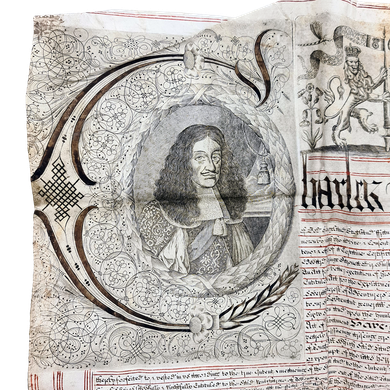
Image 1 of 4
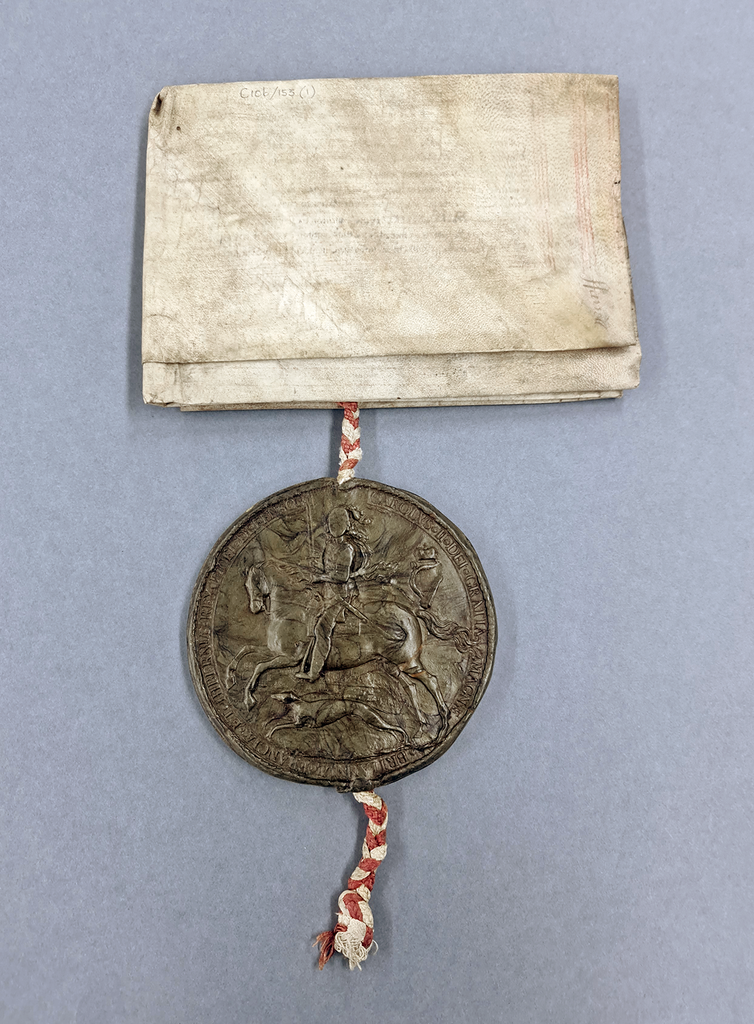
The letter patent folded closed, with the Great Seal below.
Image 2 of 4
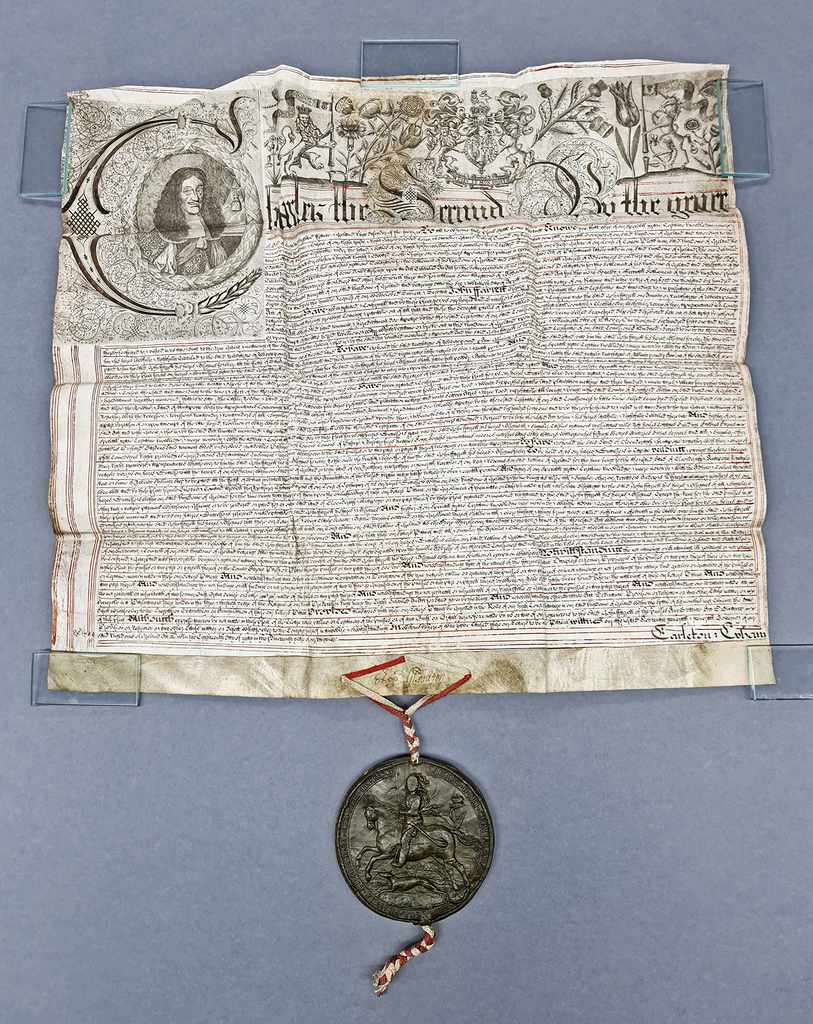
The letter patent unfolded, showing how the Great Seal is attached.
Image 3 of 4
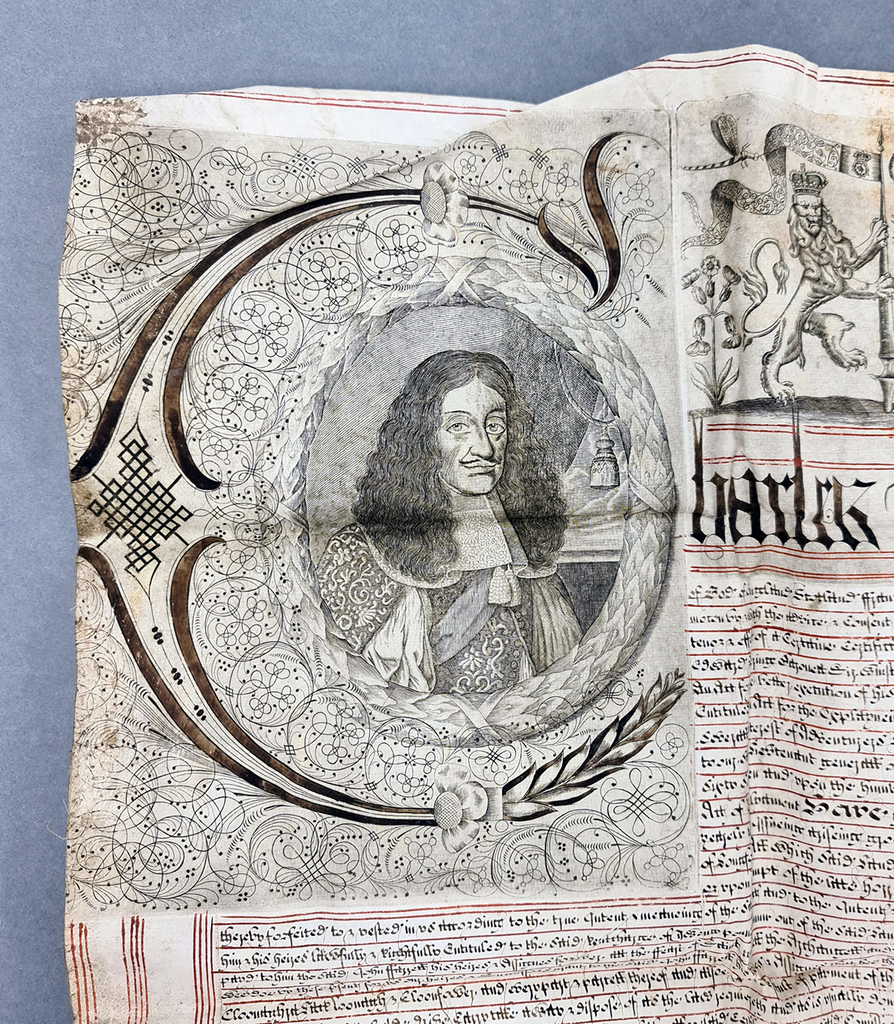
Closeup of the portrait of King Charles II at the top of the letter.
Image 4 of 4
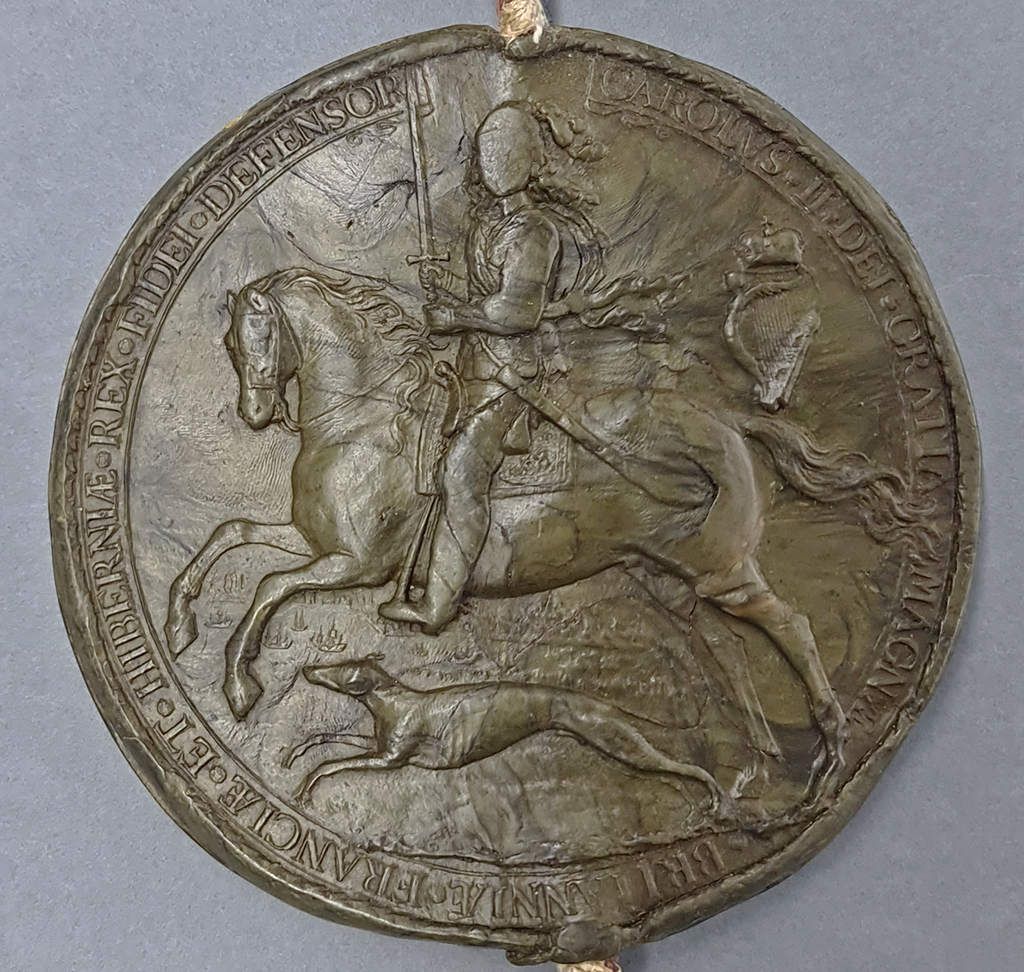
Closeup of the attached Great Seal of Ireland.
Why this record matters
Date: 1584–1690
From the late 12th century, an English government ruled Ireland from Dublin. Modelled on the government in London, with departments similar to English ones in Whitehall, Ireland was governed as an extension of the Crown’s lands.
While English (later British) rule was not consolidated across the island until the 17th century, the institutions of the Crown operated within their areas of control, governing, collecting taxes, granting lands and fighting wars. All of these created paperwork.
The National Archives in Kew houses hundreds of thousands of documents related to the governance of Ireland. Most of these relate to the daily realities of life within the English areas of control, but every now and again something unexpected emerges.
This document is a letter patent, a type of written order or grant given by the monarch. It was issued during the reign of Charles II in the 1670s by the Chancery in Dublin.
The Chancery handled most of the Crown's administration in Ireland, with the Lord Chancellor usually granted the title of Keeper of the Great Seal of Ireland. The Great Seal was a symbol of power, a unique engraving pressed onto a mixture of resin and beeswax to authenticate important documents and indicate royal approval.
In this instance we see a letter patent issued to a John Farrell, who is being granted land. The patent notes where the lands are, the terms under which the land is granted, and the rents that must be paid to the Crown. The Great Seal proves that it is official.
Original letters patent are rare, especially those that were issued to the recipients. Often all that survives is a clerical copy, with text written onto a patent roll without any of the lavish decoration seen here. To find an original in such good condition is a treat.
How did this one end up at The National Archives? It was sent to London as part of a court case taken to the Westminster Court of Chancery in the early 18th century. This document is one of many submitted to the Masters in Chancery as evidence in an equity hearing, and it was never reclaimed. In the 1840s it officially became part of The National Archives’ collection, where it sits among hundreds of papers related to lands in Ireland.